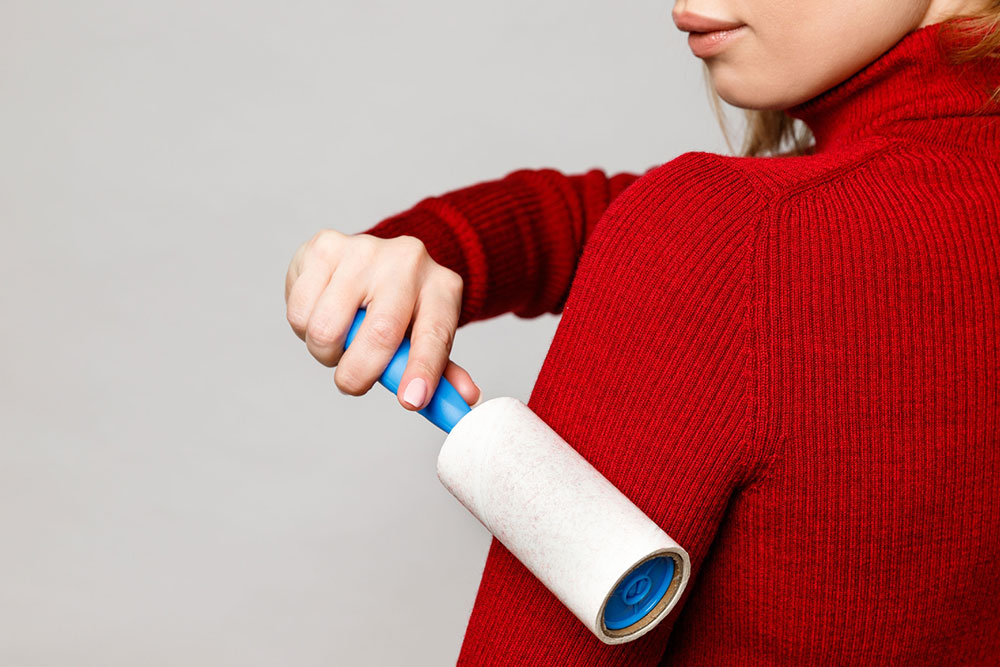Common Uses of Lint Rollers and Steps to Make One
People come into contact with millions of tiny particles every single day. Things like tiny hair strands, loose pieces of thread, dust particles, and pet dander tend to stick on areas like couches, garments, work tables, upholstery, lampshades, and other exposed surfaces on people and objects. Such minute particles may not seem problematic, but they can certainly cause sneezing fits and skin allergies. A lint roller is an ideal solution to such problems.
What is a lint roller?
In simple terms, a lint roller is a small tool consisting of a barrel with a handle at one end, coated with a layer of sticky paper.

Inventor Nicholas McKay created the first commercially deployed lint roller. His invention combined a wire, a piece of masking tape, and an empty cardboard toilet paper roll to effectively remove tiny particles from his suit. McKay’s innovation solution stemmed from a situation where he had forgotten to dry-clean his suit and needed to clean it using a makeshift liner roller.
Uses of lint rollers
These rollers have far more daily applications than most users may know.
Cleaning lamp shades
Lamp shades generally come with a delicate fabric that surrounds the main bulb. These kinds of fabrics have a soft, velvety texture, making them challenging to clean effectively. Tiny dust and dirt particles tend to easily cling to these surfaces . So, lint rollers are known to be effective in removing such particles from most kinds of fabrics. The effectiveness of lint rollers in cleaning velvety surfaces makes them particularly useful for keeping lamp shades free of dust particles. It is important to note that lint rollers should not be used to clean paper lampshades, as the sticky paper can potentially damage the covers.
Removing pet dander from surfaces
Caring for a furry friend like a dog, cat, or any other pet comes with a constant battle of removing pet dander from floors, furniture pieces , and home appliances. These tiny particles have a pesky way of sticking to the surfaces and can be quite a challenge to clean, as some may not be visible to the naked eye. Fortunately, lint rollers are the perfect solution for tackling this issue, effectively picking every last pet hair strand.
Additionally, pet hair and dust particles can trigger allergic reactions when inhaled or ingested. Using lint rollers can be a helpful measure in reducing these allergens at home.
Cleaning stuffed toys
Children are way more vulnerable to dust and allergy-driven diseases than adults. Their immune systems are not as developed or battle-hardened as an adult’s biological disease-fighting apparatus. Also, kids inadvertently touch many surfaces throughout their day, including soft and furry stuffed toys. These toys are generally made of plush fabrics, which attract large amounts of dust and other micro allergens . Parents can gently stroke stuffed toys using a lint roller to remove about 80 to 90 percent of trapped dust particles from their surfaces.
In this way, lint rollers are incredibly useful to reduce the chances of children contracting various respiratory and allergen-driven health conditions.
Clearing broken glass pieces from surfaces
When a glass object shatters, it breaks down into several tiny fragments. Cleaning the surface where the glass pieces are can be a tough task, as the smallest fragments may not be easily visible. These tiny pieces can cause injuries if stepped on. So, to prevent this situation, using a lint roller to sweep surfaces from which the large glass pieces have been removed is a handy ploy.
Cleaning non-washable curtains
Curtains have a way of attracting dust, tiny hair strands, and dirt particles. To add to it, certain types of drapes are not suitable for washing machine cleaning. A lint roller can be incredibly effective in cleaning these non-washable curtains. By running a lint roller up and down the curtains at least once or twice a week , one can remove the accumulation of nasty micro-particles and keep them looking clean and fresh.
Step-by-step process to make a DIY lint roller
The best aspect of lint rollers is that they can be easily made at home without using many resources. To make a heavy-duty DIY lint roller, all one needs is a paint roller and a roll of duct tape. Opt for a residue-free tape rather than one that may leave behind micro-particles of its own.
- To begin the process, wrap a piece of duct tape around a paint roller, with the adhesive side facing outwards. While making the roller, cut a piece of the tape and stick it onto the barrel to firmly secure the stretch of sticky paper on the roller.
- After the initial stretch of the duct tape is stuck on the paint roller, one can continue to wrap pieces of the sticky material around the roller until it is covered completely, end-to-end, in the sticky duct tape.
- Once the roller is completely wrapped, the tape is ready to use. The DIY lint roller can be employed to gather dust particles from various surfaces.
There are many other sticky materials, such as adhesive-covered rubber or malleable, sticky plastic, that work just as well as a duct tape in lint rollers.

